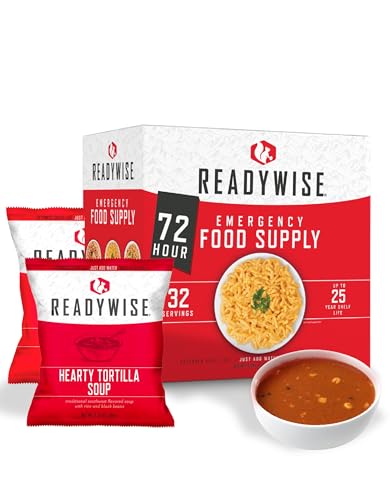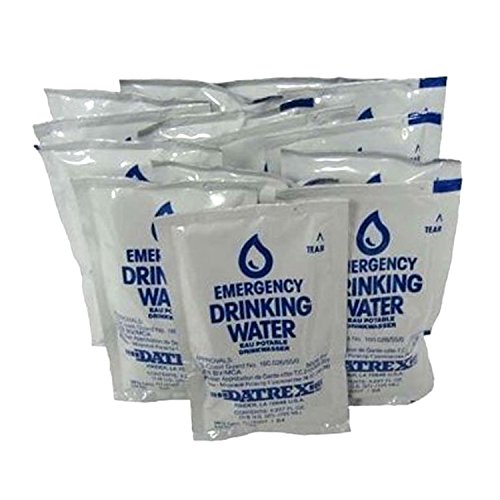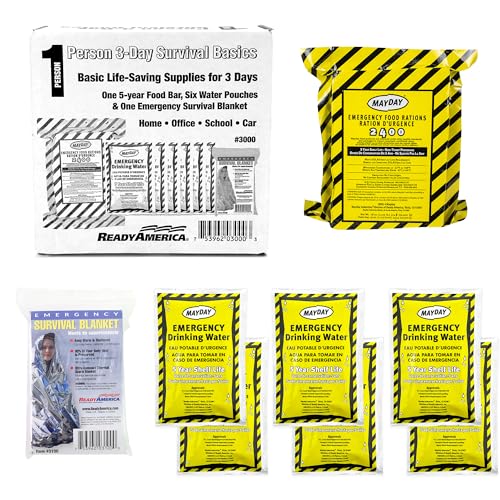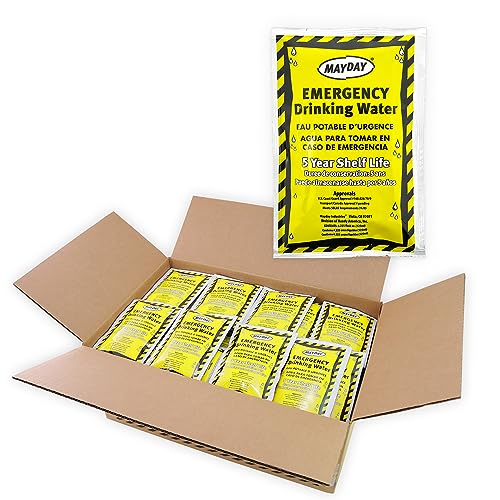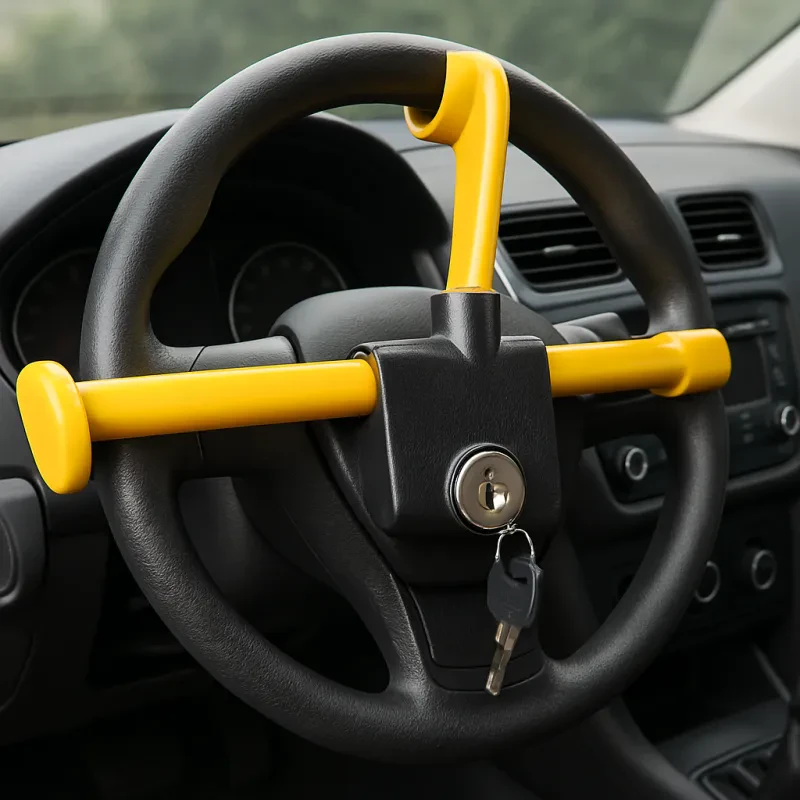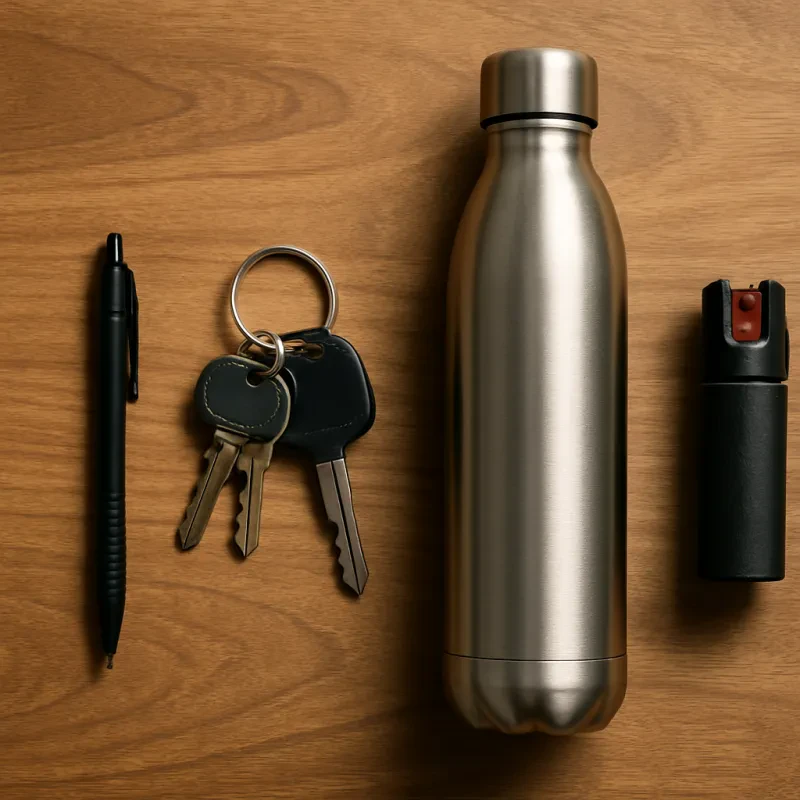Introduction to Personal Survival
Personal survival refers to the proactive measures individuals can take to ensure their safety in unforeseen emergencies. Emergencies can arise unexpectedly, whether due to natural disasters such as hurricanes, earthquakes, or floods, or man-made events including civil unrest or technological failures. The unpredictable nature of these situations necessitates a heightened awareness and preparation for personal safety.
The importance of being prepared for emergencies cannot be overstated; historical events have demonstrated that survival can heavily depend on the availability and functionality of essential products. These products serve as critical tools in navigating a survival situation, ensuring access to food, water, shelter, and communication, which are vital components for sustaining life. A well-equipped personal survival kit can mean the difference between life and death in challenging conditions.
As society continues to face various risks and challenges, the development of a personal survival strategy becomes increasingly pertinent. Such a strategy encompasses not only a physical collection of survival items but also a mental preparedness to deal with crises. By understanding the various scenarios that can lead to a need for personal survival, individuals can better equip themselves and their families. This includes acknowledging the potential threats in their environment and having a plan that encompasses not only immediate actions but also long-term survival considerations.
The necessity for personal survival products is underscored by numerous preparedness organizations that advocate for having ready-to-use kits tailored to one’s specific circumstances. Awareness and education surrounding personal survival are crucial, as they empower individuals to take charge and equip themselves for any eventuality. Thus, investing time and resources into establishing a comprehensive personal survival kit is a vital step towards ensuring safety and enhancing one’s chances of overcoming adversity in emergency situations.
Food and Water Supplies
In emergency situations, access to food and water becomes a critical concern. Ensuring that you have adequate supplies of both is essential for sustaining life and maintaining strength while awaiting rescue or reaching safety. Non-perishable food items are particularly valuable for survival kits, as they can be stored for extended periods without spoiling. Items such as freeze-dried meals, canned goods, nut butters, and protein bars are ideal choices. These foods are energy-dense, easy to prepare, and do not require refrigeration, making them suitable for long-term storage and quick consumption during emergencies.
Moreover, it is important to select foods that not only provide energy but also offer necessary nutrients to support overall health. Look for foods that are high in calories and have a balance of carbohydrates, fats, and proteins, which are essential macronutrients for the body. It is also wise to include a variety of items to prevent palate fatigue, as having a range of flavors can uplift morale in stressful conditions.
Equally important are the water supplies necessary for survival. While the human body can survive for weeks without food, it can only last for a few days without water. Therefore, it is crucial to include water purification methods in your emergency preparedness plan. Portable water filters and purification tablets readily eliminate harmful bacteria and viruses from contaminated sources. Reliable products, such as gravity-fed water filters and UV purification devices, are recommended for their durability and efficiency. Investing in high-quality filtration systems ensures that you'll have safe drinking water regardless of the circumstances.
In conclusion, prioritizing appropriate food and water supplies in your survival kit is vital for ensuring survival and well-being during emergencies. Understanding which non-perishable food items to stock and the methods for water purification can significantly enhance your readiness for unforeseen situations.
Shelter and Clothing Essentials
When preparing for emergencies, the importance of proper shelter and clothing cannot be overstated. A robust shelter protects individuals from harsh environmental conditions, while appropriate clothing is essential for maintaining body temperature and preventing exposure-related illnesses. Various options for emergency shelters include tents, tarps, and improvised structures. The choice of shelter will depend on climatic conditions, portability requirements, and the potential duration of the emergency.
Tents, particularly those designed for adverse weather conditions, offer significant protection against rain, wind, and snow. When selecting a tent, it is advisable to consider factors such as size, weight, and ease of setup. For unexpected situations, lightweight backpacking tents are optimal for portability, while larger family tents may be suited for prolonged stays in one location. Additionally, having a durable tarp can provide an effective alternative for creating makeshift shelters in emergencies.
Equally important is the selection of sleeping bags that cater to various weather conditions. Sleeping bags come with ratings that indicate the temperature range suitable for use. It is essential to choose bags with appropriate insulation, as this ensures warmth during cold nights. Furthermore, sleeping pads can provide additional insulation from the ground while enhancing overall comfort.
In terms of clothing, it is crucial to have a wardrobe composed of layers, allowing for flexibility and adaptability. Base layers made from moisture-wicking materials help manage sweat and keep the body dry. Insulating layers, such as fleece or down jackets, trap warmth, whereas outer layers made from waterproof and windproof materials protect against the elements. Accessories like hats, gloves, and thermal socks should not be overlooked as they are essential for maintaining warmth and comfort in extreme conditions.
Overall, adequate shelter and clothing are indispensable components of emergency preparedness. By investing in quality supplies tailored to various environmental scenarios, individuals can enhance their ability to survive unexpected events and create a secure, comfortable environment.
Fire and Light Tools
In any survival situation, the ability to generate light and heat is of paramount importance. Tools such as fire starters can make the difference between warmth and exposure, as well as visibility and darkness. A range of fire starters is available, with waterproof matches and lighters being among the most reliable options. These items are designed to function in harsh conditions, ensuring that, even in damp environments, a spark can be secured to ignite tinder and establish a fire.
When considering fire sustenance, it is crucial to understand both the materials required and the methodology of maintaining it. For instance, using a combination of dry wood, kindling, and proper techniques such as the teepee or log cabin structure can significantly improve fire longevity. Furthermore, it is advisable to carry fire starters like magnesium flints or ferrocerium rods as backup options, which can be effective even when traditional matches or lighters fail.
Moreover, reliable lighting sources play an essential role in survival scenarios. Flashlights and lanterns provide illumination that is critical for navigation and safety in dark conditions. When selecting portable lighting solutions, one should consider durability and versatility, as these traits will determine their effectiveness under stress. Options such as LED flashlights, which consume less battery power and provide brighter light, are highly recommended. Additionally, solar-powered and hand-crank lanterns can be indispensable, offering renewable energy sources that alleviate the need for battery replacement or reliance on disposable batteries.
Overall, equipping oneself with various fire and light tools ensures preparedness for emergencies. These products not only create essential heat and visibility but also foster a sense of security in unpredictable environments.
First Aid Kits and Medications
In the context of emergencies, the significance of a well-stocked first aid kit cannot be overstated. A comprehensive first aid kit serves as an essential tool for managing injuries and health issues that may arise during unexpected situations. These kits should contain a variety of supplies to address common medical needs. For instance, bandages in various sizes are critical for covering wounds, while adhesive strips and sterile gauze help protect injuries from infection. Antiseptics, such as alcohol wipes or iodine swabs, play an important role in disinfecting wounds. Additionally, including scissors and tweezers can facilitate the effective removal of splinters or debris from injuries.
Moreover, incorporating medical essentials such as adhesive tape, sterile gloves, and a CPR mask can be potentially lifesaving. These items ensure that first aid can be administered safely and effectively until professional help arrives. It is also advisable to include a first aid manual or guide in the kit, which can provide valuable instructions for administering care in various scenarios.
Beyond just basic supplies, medications also hold a critical place in any survival preparation. A first aid kit should contain pain relievers, such as ibuprofen or acetaminophen, which can alleviate discomfort from injuries or strains. Individuals with chronic health issues must also prioritize personal prescription medications and ensure they are included in their emergency kits. Regularly checking expiration dates and replenishing supplies is essential to maintain the effectiveness of the contents.
Ultimately, preparedness through an equipped first aid kit can significantly enhance the ability to handle injuries in emergency situations. By having the right supplies and medications on hand, individuals can manage health concerns efficiently, improving outcomes until professional medical assistance is available.
Tools for Survival
When preparing for emergencies or survival situations, selecting the right tools is paramount. Multi-tools and knives are essential components of any survival kit, offering versatility that can significantly enhance one’s chances of survival. These tools not only perform various tasks but also serve as a reliable means of addressing a myriad of challenges faced during survival scenarios.
Multi-tools, such as the renowned Swiss Army knife, combine several features into one compact unit. They typically include knives, pliers, screwdrivers, and can openers, making them indispensable in a wide range of situations. When choosing a multi-tool, durability should be a primary consideration. Look for options crafted from high-quality stainless steel, as they are more resistant to corrosion and wear. Additionally, ergonomic designs enhance usability, allowing you to tackle various tasks with ease.
Knives, on the other hand, are fundamental for different aspects of survival. A strong, sharp knife can assist in preparing food, cutting materials for shelter, and both first aid and self-defense situations. Factors to consider when selecting a knife include blade material, length, and handle design. Fixed blades tend to offer greater strength and longevity compared to folding knives, making them better suited for heavy-duty tasks. Alternatively, a good folding knife is practical for everyday use and easy to carry.
With these tools, one can engage in critical survival tasks such as preparing food through hunting or foraging, constructing a shelter from available materials, and even signaling for help when necessary. By understanding the features and benefits of multi-tools and knives, individuals can make informed choices that will equip them for emergencies. A well-considered selection of these tools plays a significant role in improving overall survival capabilities when faced with unforeseen circumstances.
Navigation Aids
In survival situations, maintaining orientation is crucial, and navigation aids, such as compasses and maps, serve as fundamental tools that can significantly enhance a person's ability to navigate through unfamiliar terrains. Understanding how to use these tools effectively is essential for anyone looking to improve their survival skills.
A compass is an invaluable device that provides directional guidance. It works by aligning itself with the Earth's magnetic field, allowing an individual to determine their cardinal points: north, south, east, and west. To use a compass effectively, one must first identify the direction in which they wish to travel. By holding the compass level and rotating the dial until the magnetic needle aligns with the north indicator, the user can ascertain the direction to proceed. This technique can be vital in emergencies, where disorientation may be prevalent.
Maps, on the other hand, offer a broader overview of the terrain and can provide critical information about the layout of an area, including geographic features, landmarks, and potential hazards. Familiarizing oneself with how to read both topographic and road maps can be immensely beneficial. The key is to correlate one’s compass reading with the map’s orientation; for example, aligning the map north with the compass is a useful practice. This allows the user to pinpoint their current location and navigate toward safety or resources effectively.
By combining the use of both a compass and a map, individuals can develop a clear understanding of their surroundings and minimize the feelings of disorientation often experienced during emergencies. Mastering navigation aids not only bolsters confidence but also increases the chances of successfully reaching safety, making these tools indispensable for anyone preparing for the unexpected.
Protection Gear and Self-defense Tools
In survival situations, the necessity of self-defense and protection gear cannot be overstated. These products play a crucial role in ensuring personal safety and enhancing one’s ability to withstand threatening circumstances. Understanding the various self-defense tools available, such as pepper spray and personal alarms, can empower individuals to respond effectively during emergencies.
Pepper spray is a widely recognized self-defense tool that enables individuals to deter potential attackers from a safe distance. This aerosol spray contains oleoresin capsicum, which causes temporary blindness and discomfort, providing the user with a critical advantage to escape dangerous situations. It is essential to familiarize oneself with local laws regarding the carrying and usage of pepper spray to avoid legal complications. Additionally, practical exposure or training can significantly increase the effectiveness of this self-defense option.
Another valuable self-defense tool is a personal alarm. These small, portable devices emit a loud sound when activated, drawing attention to the user in cases of danger. The alarm's primary purpose is to deter potential threats and alert others nearby to the situation at hand. With various options available on the market, users should choose a personal alarm that is compact, easy to access, and offers sufficient volume to be effective in an emergency.
Moreover, protective clothing is equally vital in survival scenarios, particularly in adverse weather conditions or unsafe environments. Durable apparel, designed for toughness, can shield against harsh elements and potential physical threats. Clothing items such as reinforced jackets, bulletproof vests, and durable footwear enhance an individual's sense of security and readiness for unexpected encounters.
The importance of feeling secure and empowered in survival scenarios cannot be underestimated. Utilizing self-defense tools and wearing appropriate protective clothing provides individuals with a greater sense of control and the ability to proactively protect themselves in emergencies.
Hygiene and Sanitation Products
Maintaining proper hygiene and sanitation during emergencies is crucial for health and well-being. In challenging situations, access to clean water and adequate sanitation facilities may be severely limited, leading to potential health risks. Therefore, it's essential to prioritize hygiene supplies in your emergency kit, as the right products can significantly mitigate these risks and enhance comfort.
Portable toilets are a vital component of your sanitation strategy. They provide a practical solution when traditional bathrooms are unavailable. When selecting a portable toilet, consider factors such as size, weight, and ease of assembly. Additionally, look for options that use biodegradable waste bags or can be safely disposed of without harming the environment. Having a designated sanitation spot, along with a portable toilet, not only promotes hygiene but also helps preserve the dignity of those affected by the emergency.
In addition to portable toilets, personal hygiene items should not be overlooked. Essential products include soap, hand sanitizer, toothbrushes, toothpaste, sanitary pads, wipes, and toilet paper. These items play a critical role in preventing the spread of germs and infections, which is particularly important when medical assistance may be hard to obtain. Consider incorporating multi-purpose hygiene products, such as disinfectant wipes, that can serve several functions to save space in your emergency kit.
Moreover, it's wise to assess the specific needs of your household when stocking up on hygiene supplies. For instance, families with young children may need extra diapers and baby wipes, while individuals with special health conditions might require specific medical hygiene products. A well-prepared hygiene kit not only safeguards health but also contributes to the overall morale of those experiencing an emergency.
Conclusion and Final Tips for Survival Preparation
As we have highlighted throughout this blog post, the importance of being adequately prepared with essential survival products cannot be overstated. Emergencies can occur without warning, making it crucial to have a well-equipped personal survival kit ready at all times. This kit should contain fundamental items, such as water purification systems, non-perishable food supplies, first aid essentials, and tools for shelter construction. By thoughtfully selecting each product, individuals can significantly enhance their ability to respond effectively in a crisis.
In assembling a comprehensive personal survival kit, it is advisable to tailor the selection of products to meet one’s specific needs and circumstances. Consider factors such as geographical location, climate, and personal health when determining what items to include. Additionally, it is beneficial to regularly assess and update the contents of your survival kit. Conducting an inventory at least once a year ensures that all essential products remain functional and that food supplies have not expired.
Moreover, fostering a proactive mindset toward emergency preparedness is one of the best ways to equip oneself for the unexpected. Individuals should not only focus on assembling supplies but also invest time in learning practical skills related to survival situations. Taking courses in first aid, navigation, and fire-building can significantly increase one’s confidence and preparedness. Finally, engaging in open discussions with family members about emergency plans and scenarios ensures that everyone is on the same page, facilitating a swift and coordinated response when it matters most. The journey towards effective emergency preparedness is ongoing and requires continual learning and adaptation.

